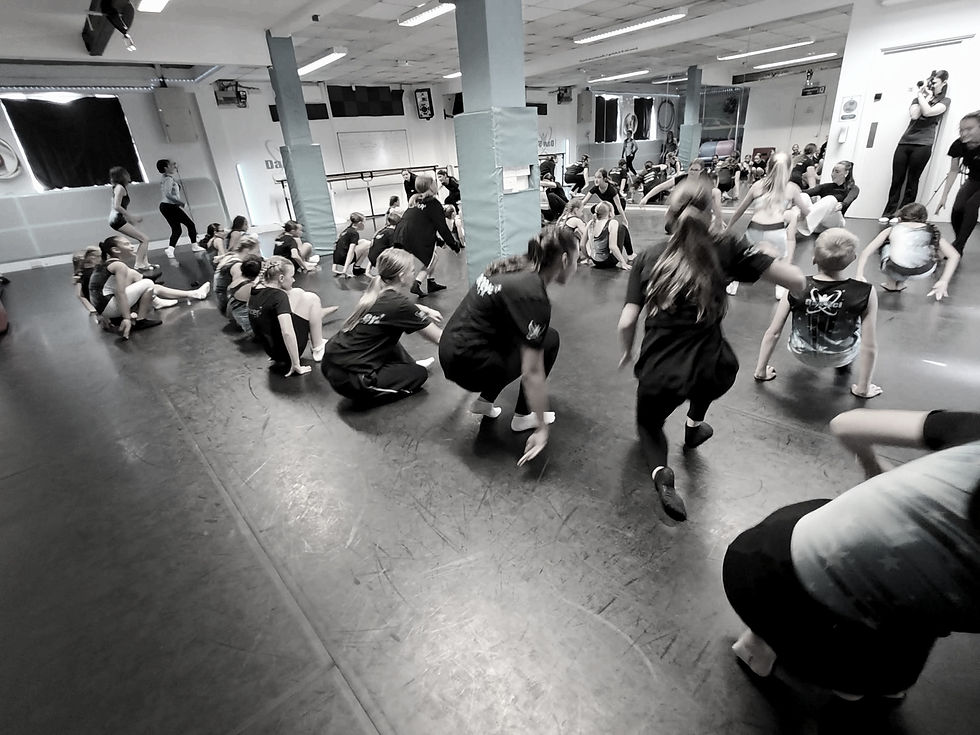How Dance Can Empower Individuals with Special Needs
- The DanSci Team
- Sep 17
- 3 min read
Dance is a universal form of expression that transcends language, culture, and social barriers. For individuals with special needs, dance becomes not just a medium of self-expression but also a powerful tool that enhances physical, emotional, and social well-being. In this blog post, we will explore how dance can empower individuals with special needs, focusing on the benefits it offers, the different styles available, and resources like special needs dance classes that can facilitate this journey.
The Benefits of Dance for Individuals with Special Needs
Dance provides a myriad of benefits for individuals with special needs. It helps improve gross and fine motor skills, coordination, balance, and physical strength. Engaging in dance also promotes cognitive development, which can enhance memory and concentration. Additionally, dance offers emotional benefits such as improved self-esteem, a sense of accomplishment, and an outlet for self-expression.
Studies have shown that individuals participating in dance programs showcase significant improvements in their social skills. An increase in teamwork and communication abilities can often be observed in dance settings. By working together with peers, individuals with special needs learn the art of collaboration, listening, and following cues.

Special Needs Dance Forms
There is a wide variety of dance styles that can cater to individuals with special needs. From expressive movements in ballet to high-energy hip-hop routines, the options are endless. Here are a few popular dance forms that are often adapted for individuals with special needs:
Creative Movement: This style often encourages free expression. It allows individuals to explore movement without the constraints of structured routines. Creative movement can be particularly beneficial for individuals with limited mobility.
Adapted Ballet: Traditional ballet can be modified to accommodate various abilities. Adapted ballet focuses on inclusivity, allowing participants to engage with the art form while enhancing their physical skills.
Zumba for All: Zumba is a fun, high-energy dance workout set to lively music. Zumba classes that include individuals with special needs create an energizing environment that promotes cardiovascular fitness and rhythm.
Hip-Hop and Street Dance: With its vibrant moves and beats, hip-hop dancing offers a way for individuals to express themselves. The inclusive nature of hip-hop makes it an excellent choice for dance programs.
Musical Theatre: Combine the high energy, story telling of song and dance. This great style helps build confidence and communication skills.

Creating Inclusive Dance Environments
To empower individuals with special needs through dance, it is vital to create inclusive environments. Dance instructors should be sensitive to the unique challenges that individuals may face. This includes modifying techniques, offering varied learning methods, and fostering encouragement and positivity.
Here are some actionable recommendations for creating inclusive dance environments:
Training for Instructors: Dance educators need specialized training to cater to the unique needs of individuals with special needs. Informational workshops focusing on adaptive techniques and methods can significantly improve the effectiveness of programs.
Supportive Community: Forming a community of peers, family members, and supporters fosters a nurturing environment. Encouragement from fellow dancers and instructors can boost confidence and motivation.
Use of Technology: Technological aids such as visual learning tools can enhance understanding for some individuals. Video demonstrations or virtual classes can also be beneficial, especially for those who may thrive in a familiar setting.

Final Thoughts on Dance and Empowerment
Dance is more than just movement; it is a means for empowerment, self-discovery, and personal growth for individuals with special needs. The joyous experience of dancing allows for creative expression while also presenting physical benefits that enhance overall health.
If you are looking for ways to introduce the transformative experience of dance to someone with special needs, there are numerous resources available. Starting with local groups or checking out special needs dance classes can provide wonderful opportunities for connection, learning, and enjoyment.
Ultimately, dance empowers individuals, helping them not only to move but to thrive in various aspects of life. By embracing this art form, we create a world where everyone can express themselves freely and joyfully.














































Comments